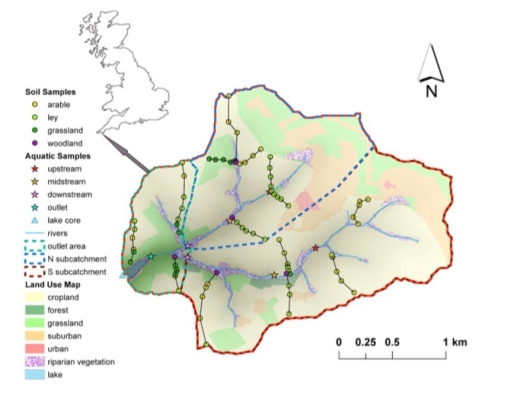Soils are essential for human wellbeing, providing important services including carbon storage and food security. Therefore understanding human impact on the flow of sediment and organic matter from soils to inland waters is important both for climate change mitigation and to protect water quality.
In 2017 a team of researchers from Exeter University, Cranfield University, and The James Hutton Institute studied the flow of sediment in Carminowe Creek; which feeds directly into the Loe on its eastern side.

In this study, they tested a new tool for tracing the origin of sediment and carbon from land to inland waters at a catchment scale, using a novel combination of nutrients (nitrogen and carbon) and plant-specific leaf-waxes (n-alkanes) to understand the sources of sediment and organic matter in river and lakes sediments from different land uses.

Their findings support the understanding of the important role of rivers in the transport and processing of terrestrial carbon. How much is stored in these freshwater systems and how much is released to the atmosphere is a major area of scientific research.
This research provides a new tool for the study of these important questions, both from the point of view of climate change mitigation and the management of water quality.
You can read the lay summary here: Glendell et al. 2017; Summary for General Public
The full article, published in the Journal Science of the Total Environment, can be found here: Tracing of particulate organic C sources across the terrestrial-aquatic continuum, a case study at the catchment scale


